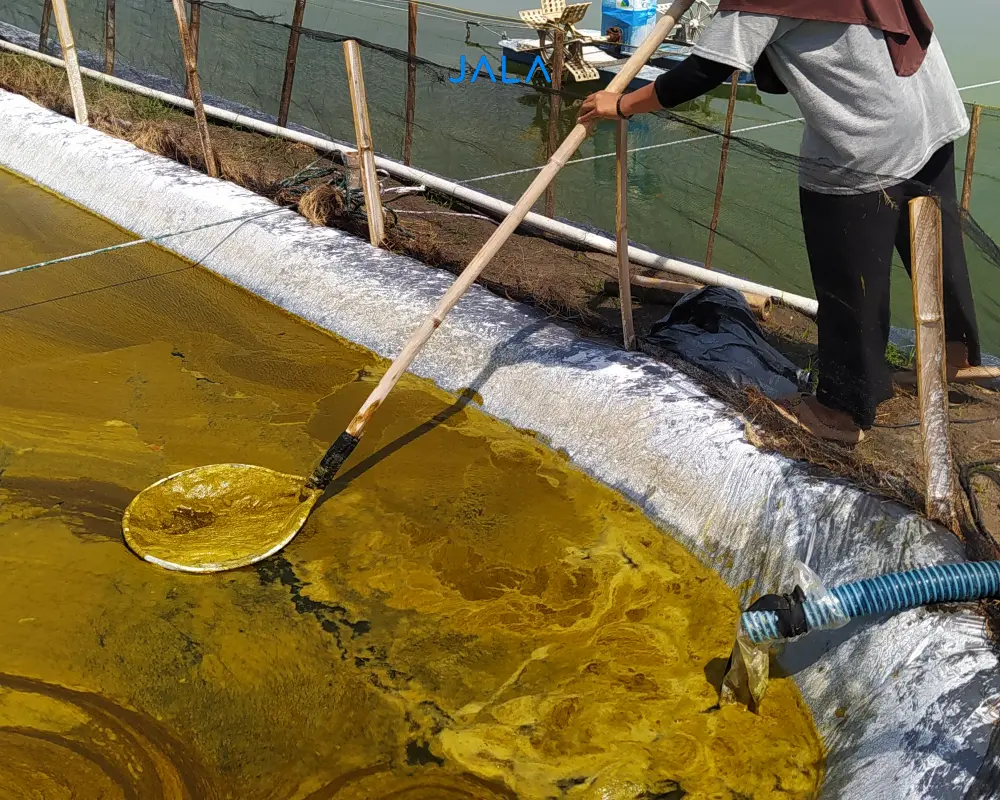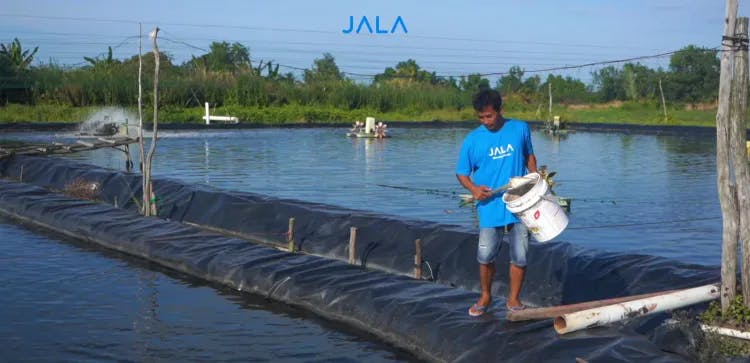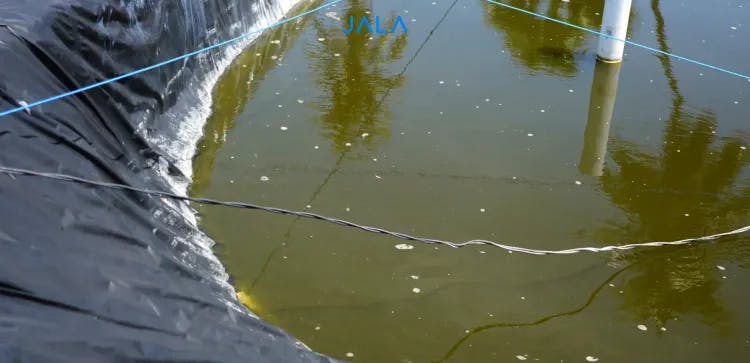‘Klekap’ are one of the phenomena that farmers might encounter in their shrimp farms. ‘Klekap’ in shrimp farms need to be addressed to prevent poor water quality which threatens cultivated shrimp.
What exactly are ‘klekap’ and how to overcome them in shrimp farms? Find out the full explanation in this article!
What is ‘Klekap’?
‘Klekap’ is an Indonesian term which refers to microphytobenthos and their associated meiofauna, which form thread-like aggregates and mix with shrimp feces and other waste from shrimp farms. There are various microalgae and benthic organisms that form ‘klekap’, such as Oscillatoria sp., Rhizosolenia sp., Pleurosigma sp., Amphora sp., Cocconeis sp., and Achnanthes sp.
Microphytobenthos can be found in benthic aquatic habitats, particularly in estuarine intertidal sedimentary areas with the highest light intensity. In shrimp farms, the formed ‘klekap’ can float to the water surface due to the oxidation process, which occurs under high sunlight intensity conditions.
‘Klekap’ in shrimp farms can be identified as greenish brown or bluish green sheets, depending on the algae which form them.
The Role of ‘Klekap’ in Shrimp Farms
Microphytobenthos are natural producers in their estuary or shallow coastal habitats, with a productivity level that may exceed phytoplanktons. Microphytobenthos and their associated meiofauna also play an important role in sediment dynamics. Some diatom algae help stabilize sediments by excreting polymeric substances.
However, the presence of microphytobenthos and their associated meiofauna or ‘klekap’ in shrimp farms cause a higher concentration of organic substances and the drop of dissolved oxygen levels available for shrimp.
Read more: Beware of Dead Spots in Ponds
‘Klekap’ which remains on the pond surface might sink to the bottom of the pond and decompose, producing ammonia and hydrogen sulfide gas, which are toxic and have a foul smell. This phenomenon causes a decrease in water quality, which in turn causes stress and even mortality for shrimp.
Overcoming ‘Klekap’ in Shrimp Farms
 Melihat dampak negatif dari klekap pada tambak udang, petambak perlu mengetahui cara mengatasinya. Berikut langkah mengatasi klekap di tambak udang:
Melihat dampak negatif dari klekap pada tambak udang, petambak perlu mengetahui cara mengatasinya. Berikut langkah mengatasi klekap di tambak udang:
1. Maintain water cleanliness
Ponds need to be kept clean by removing 'klekap' on the water surface. Additionally, to prevent the accumulation of sinking 'klekap', perform regular siphoning to clean the pond bottom. This is because the increase in 'klekap' is also triggered by the accumulation of organic matter in the pond water.
Read more: The Importance of Water Quality Monitoring and How to Read Its Results
2. Pay attention to water aeration and circulation
Sufficient aeration and water circulation ensure that oxygen is distributed evenly throughout the pond and there is no accumulation of organic matter. Aeration and circulation can be improved by using aerators or bubble jets to enhance waste or sediment circulation in dead spots. Bubble jets can be symmetrically placed in each corner of the pond to minimize dead spots.
3. Give fertilizers to support plankton growth
Lastly, the application of urea fertilizers and the addition of probiotics help to promote balanced plankton growth in shrimp ponds. Planktons will aid in restoring pond water quality.
Conclusion
‘Klekap’ is a term for microphytobenthos and their associated meiofauna, which are sheets formed from algae and shrimp feces in the farm. ‘Klekap’ can float on the water surface due to oxidation caused by intense sunlight. If left untreated, ‘klekap’ can cause water quality to decrease and threaten the shrimp cultivation.
To get rid of ‘klekap’, farmers should:
- Maintain water cleanliness
- Pay attention to water aeration and circulation
- Give fertilizers to support plankton growth
In addition to these three steps, farmers also need to regularly monitor the condition of their ponds. By recording pond data such as water quality, cultivation data, and plankton data, farmers can anticipate water quality decline and take appropriate measures for their cultivation.
JALA App is #HeretoHelp shrimp farmers record, monitor, and analyze their cultivation in real-time, anytime and anywhere. Haven't joined JALA App? Register now on app.jala.tech and download the application from Google Play Store or App Store!




